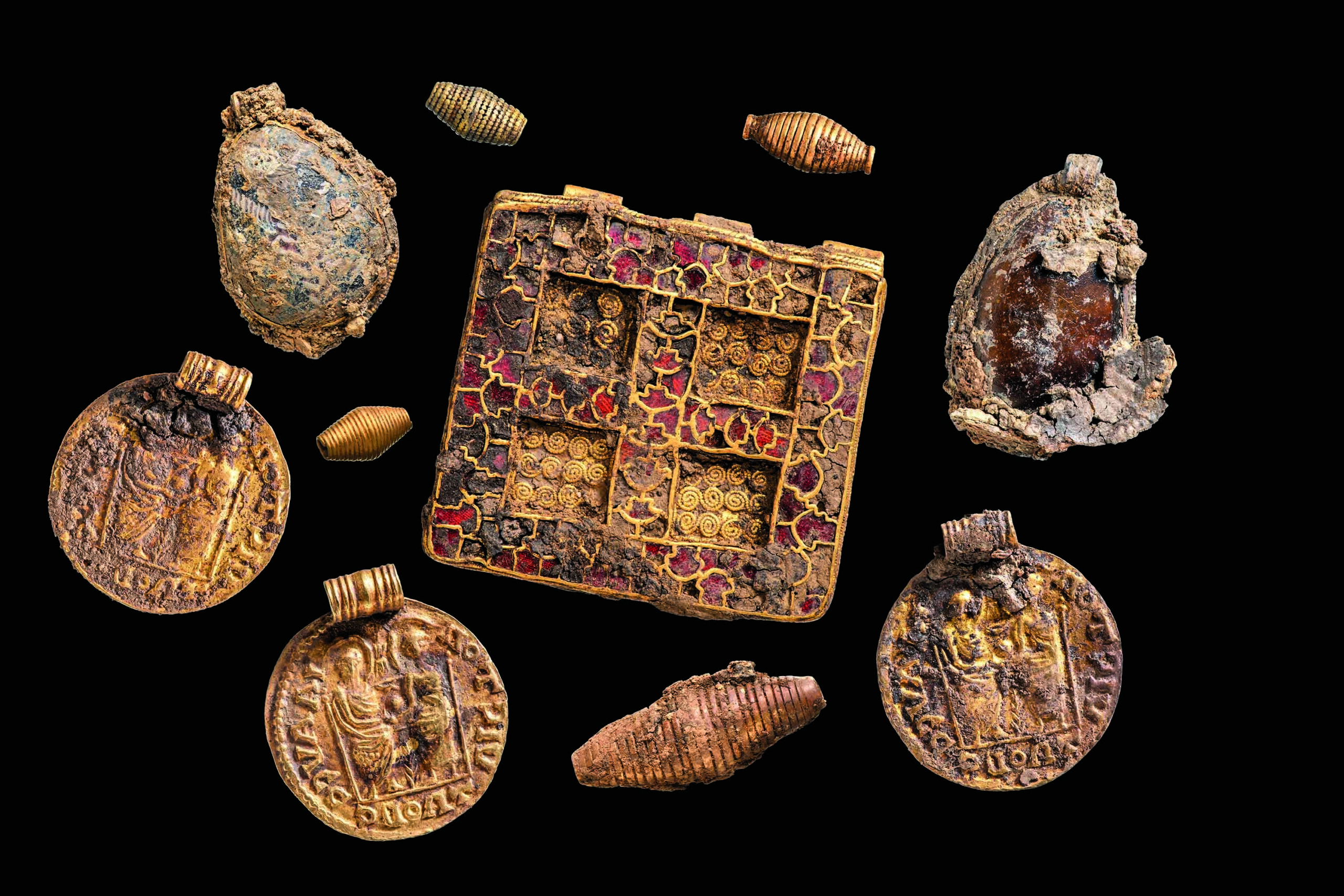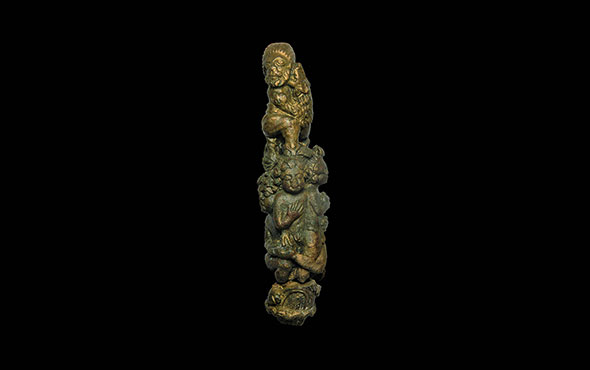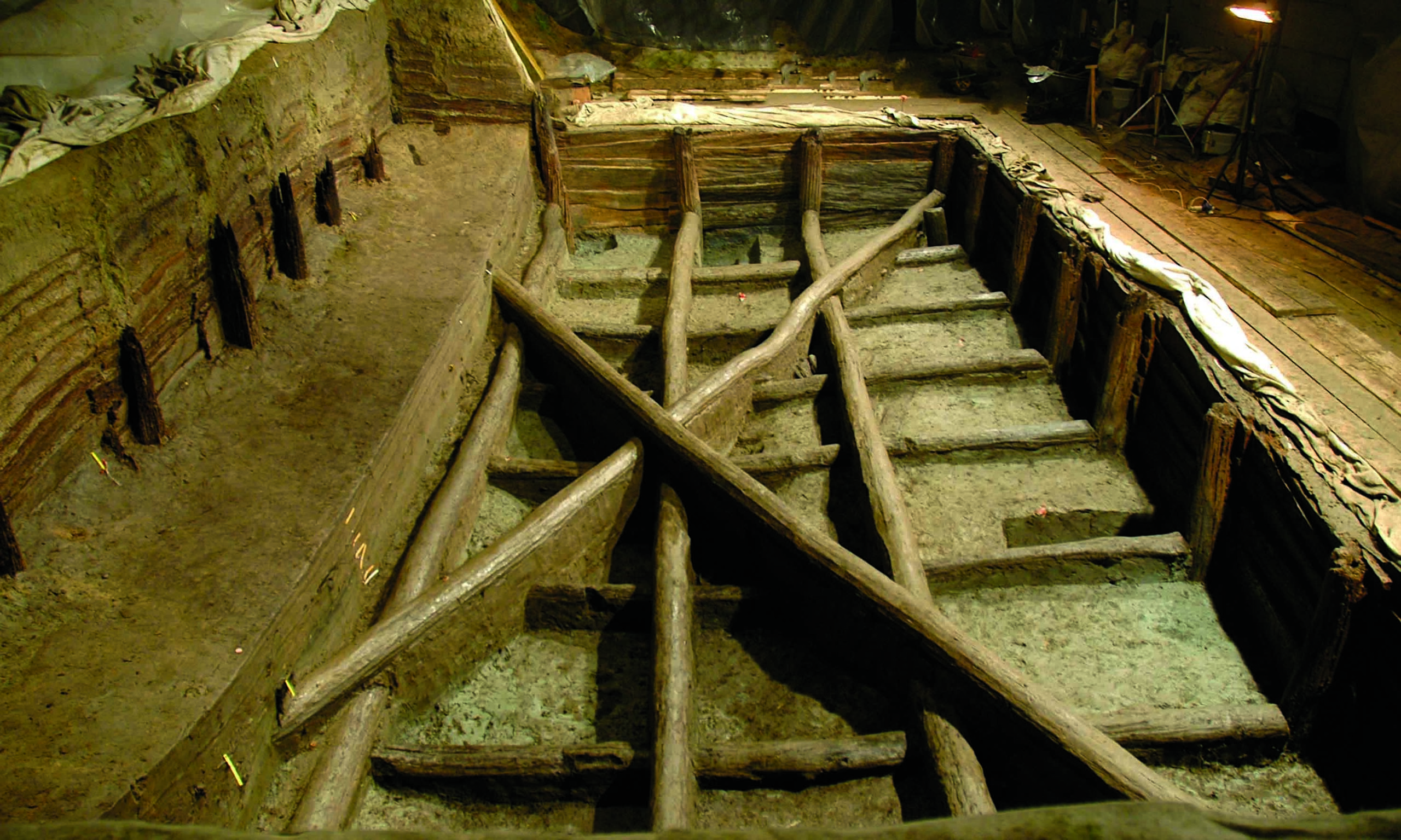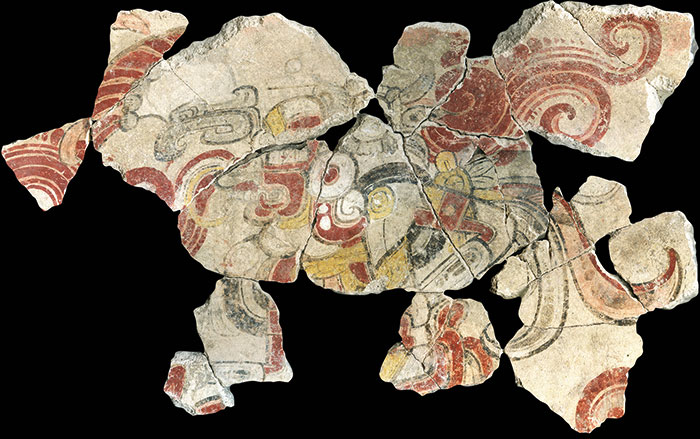
CAMBRIDGESHIRE, ENGLAND—The Guardian reports that cleaning and examination of the remains of a man found in 2017 in a cemetery near a Roman settlement site in eastern England has uncovered possible evidence for the practice of crucifixion. The man was between 25 and 35 years old at the time of his death sometime between 1,661 and 1,891 years ago. At first, excavators led by David Ingham of Albion Archaeology noted that he had been buried in a grave with a wooden structure that may have been a bier, with his arms placed across his chest. When the remains were later cleaned of mud, Corinne Duhig of the University of Cambridge found a nail that had been driven through his right heel bone. “We know a reasonable amount about crucifixion; how it was practiced and where it was practiced and when and so on from historical accounts,” Ingham said. “But it’s the first tangible evidence to actually see how it worked.” Duhig also found that the man had thinned shin bones, perhaps from wearing manacles over a long period of time while enslaved or imprisoned. DNA analysis of his remains indicates that he was not genetically related to any of the 48 people buried in the cemetery, but was a member of the local population. To read about another burial of a man in England that may contain the remains of a Roman slave, go to "Identifying the Unidentified."










